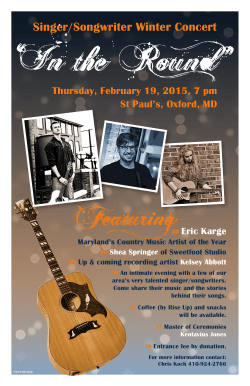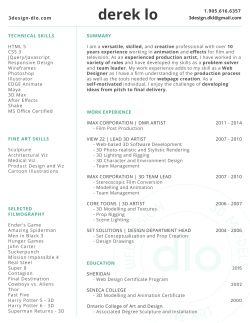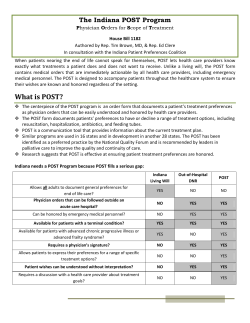
T A What is Typography? = the arrangement, style, appearance, and
TYPOGRAPHY What is Typography? = the arrangement, style, appearance, and printing of typefaces The two main types of typefaces: Font Searches: www.dafont.com , www.urbanfonts.com, http://www.fontspace.com Fonts…they can covey messages and emotions too! Which # font do you think best describes anger? Why? Now look at artists who use TEXT as the subject for their artwork • http://www.bemboszoo.com/ Robert Indiana • Born as Robert Clark in Indiana, 1928. American artist, called Pop Artist, but he considers himself a “sign painter.” • Influenced by American roadside signs. • Went to several prestigious colleges and finally settled in New York. • Works with bold colors and graphic symbols. • Gives new meanings to basic words “Eat. Love. Die.” makes us look at common things in a new perspective. • Collaborated with Andy Warhol Robert Indiana Stamps – postcards sculptures ASCII :: computer Paul Smith, cerebral palsy how do you think these images were made? • Link to Paul Smith amazing video • Examples of artworks made out of ONLY text 3D COLLAGE • An artistic composition created by gluing various materials/images together How do you create an interesting composition? • What are some traffic signals artists use to direct the viewers eye down a path? • What if it is just black & white? • Where does your eye typically go first? Lightest area, biggest area, center = Placing objects in a composition to provide a visual path for the viewers eyes to travel across the surface • Tools to lead the eye: color, rhythm, line, sequence, contrast, MOVEMENT Type of Space: • Positive Space: Space taken up by objects that the artist wants the viewer to see. • Negative Space: Space that is around the objects or the leftover, empty space. • “Notan” is the term used by the Japanese to express “light-dark” as an element of design. In the west we use separate terms such as positive space and negative space, dividing the idea of light-dark into separate components. On paper it is easy to see that dark shapes cannot exist without a surrounding area of white. White shapes cannot exist without dark to define it. The two elements are really one. This is an eastern concept of yinyang that each is what the other is not. NOTAN Notice that positive space cannot be defined if it were not for negative space! • Where is the positive space? • Where is the negative space? • This student did a good job BALANCING the positive and negative space. At first glance it is hard to tell if it is white on black paper, or black on white paper. • CONTRAST: = a large difference between two things • UNITY: = everything fits together as a whole; harmony • RHYTHM/REPETITION: = repetition of shapes, colors, lines, values = repeating an element over and over VARIETY = differences in artwork; diversity How do you create variety using text? You change the: -Font style -Size big/small -Thick / thin -direction / angle Your Job: • To use text in a way that it loses its identity as letters – and becomes a shape or space. • To learn to lead the viewer’s eye across an image by using the design principles. Warm up activity: • Look through magazines to cut out letters and glue them down on your handout to illustrate the 5 ways to arrange a composition. Design Requirements: • • • • Choose 1 letter, 1 emotion, 1 font Create a template for each size letter Use at least 15 cut out letters in your final design Create an interesting composition using repetition and positive/negative space. • Create a definite path for the eye to follow. • Craftsmanship: Neat and careful cutting/gluing. Search websites for fonts: www.dafont.com www.urbanfonts.com www.fontspace.com www.font500.com www.fontpark.net
© Copyright 2025





















